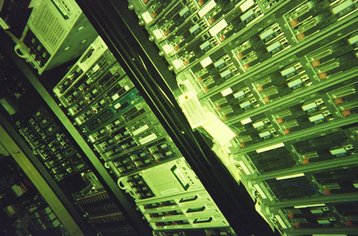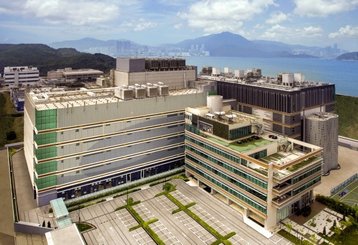The demand for data centers is projected to be higher than ever, as organizations continue to migrate legacy infrastructure to the cloud, businesses turn to digitization as a competitive advantage, and trends such as the Internet of Things (IoT) take to the stage.
As we enter into the first weeks of 2016, what will the new year bring to the data center space in the region? We spoke to executives from some of the top data center operators here – many of whom have either very recently launched, or will launch new data centers in 2016.
Green is still a theme
Unsurprisingly, sustainability remains one of the top considerations that was mentioned as an area of concern in the new year. While it is hard to imagine rapid strides being made towards renewable energy in the short span of a year, there is no question that renewables and efficiency will remain one of the top topics on the minds of data center executives this year.
“With the increasing growth of data center size and scope, it’s hardly surprising to note that energy consumption is also on the rise,” said Kevin Wee, the director of CenturyLink’s colocation business in the Asia Pacific region. “To address the sheer power demands of data centers and society at large without increasing our carbon footprint, we predict a shift from fossil fuels towards renewable green energy.”
Wee said next-generation fuel cell energy could help reduce carbon footprint, assuming that it can be produced at a cost effective level. Where energy efficiency is concerned, modern data centers and cloud offers a platform for just-in-time consumption, said Wee, as well as the ability to automatically dial the IT infrastructure “up and down” as necessary.
“While ‘green’ has been a theme for the industry in the past years, we’ve seen a greater focus on this in the past year and expect this push to continue,” agreed Krupal Raval, senior vice president for finance at Digital Realty. “We saw a renewed focus on sustainability in the data center industry in 2015, with more renewable energy commitments and drivers from across the industry for ‘Green’ IT.”
“Moving forward into 2016, Green IT will move up the C-suite’s agenda as corporations accommodate greater demand for sustainability by governments and consumers. Data center operators and cloud providers will also look at innovating around improving efficiency in an effort to meet these demands,” said Raval. Digital Realty recently announced its second data center in Singapore.
There is still room for innovation when it comes to designing an energy efficient data center, according to Taylor Man, the executive vice president of NTT’s cloud business division.
“Power consumption accounts for a major operating expense (opex) of data centers today. But so many data centers in Asia Pacific are still hanging on to conventional thermal management and continuous cooling designs that are not as effective to drive TCO down,” said Man. “There is a pressing need to look into developing more cutting-edge energy efficient data center designs.”
Man highlighted NTT’s new Financial Data Center Tower (FDC2) in Hong Kong that he says is a game changer with its use of a front-flow cooling design (AHU) with hot aisle containment. Launched last month, the improved air flow management and effectiveness was touted to offer an energy efficiency of over 20 percent compared to legacy cooling systems, he told us.
Still moving to the cloud
Say what you wish about the cloud, but the reality is that, slowly but surely, IT is inching its way there. Enterprises are embracing a hybrid architecture in which sensitive data is stored on-premises, while the rest of the infrastructure is a mixture of private or public cloud in data centers. And this looks set to continue in 2016, says Raval, as businesses look to digitization to better position themselves over their competitors.
“The way IT is viewed within businesses and enterprises is expected to change and businesses need to be positioned for digital transformation in order to fully capitalize on the opportunities of the IoT,” said Raval. He cited an IDC prediction that almost 65 percent of companies’ IT assets will be housed off-site by 2018, either by colocation, hosting, or deployments within cloud data centers.
“We could predict the market to adopt the cloud quicker than ever before as more and more people realize the benefit of cloud and incorporate it into their strategy,” said Voradis Vinyarath, the executive director and acting managing director of TCC Technology (TCCT) in Thailand. “Just like mobile, cloud will soon become a ‘must have’ instead of a ‘nice to have’ once people perceive the benefit in term of affordability, stability, reliability and scalability.”
Rapid changes in IT demand new tech standards which look beyond the physical infrastructure, such as the Multi-Tier Cloud Security (MTCS) Standard for Singapore (SS 584), which looks at a variety of factors including business and data controls to certify the security practices of cloud providers.
“In the cloud space, Infocomm Development Authority (IDA) has been actively encouraging service providers and vendors to provide their services on Multi-Tier Cloud Security (MTCS) certified platforms,” noted Septika Widyasrini, the CEO of Telin Singapore, which is currently building the first data center in Singapore’s Data Center Park that will be ready for operation in Q3 2016. “We have a full infrastructure with redundant architecture and technical capabilities to support different cloud user needs for data sensitivity and critical business applications.”
Constraints and connectivity
With the above in mind, what does the new 2016 generation of data centers have to look like in order to succeed? Certainly, they will need to offer new levels of deployment flexibility, but also to be future-proof in growth areas such as mobility, Big Data and IoT.
Apart from the evolving needs of IT, the constraints of land-scarce, high-rent hubs such as Singapore, Hong Kong and Tokyo give us a glimpse of what to expect. Certainly, these constraints are driving the construction of data centers that are more cost effective in terms of land use, as well as being able to meet increased power requirements to meet computing loads, according to Man.
“While the onset of server and virtualization technology evolution could make the power density stay high up at 8-10kVA level,” wrote Man of NTT. “There is no doubt that rising power density would become one key trend to watch, which will further filter down to the need to better integrate energy-efficient technology in future data center designs for optimizing total cost of ownership in the long run.”
The executives also agreed that network connectivity beyond the walls of the data center will be increasingly relevant. As we noted in our 2015 year in review, faster 100Gbps connectivity between data centers is still the exception rather than the rule, though 2016 could be the year where prices of these dedicated pipes come down to a level where more businesses can tap into them.
“We have also observed a growing East-West traffic [ie internal to the data center] trend from our customers and we expect this growth to continue in the next five years,” said Wong Ka Vin, the managing director of 1-Net that is set to launch its 1-Net North data center in the first quarter this year. “ASEAN integration presents significant opportunities for trade, flow of services and information, and we believe that the adoption of the data center corridor would be integral in connecting strategic data centers within cities in Asia.”
“Data centers are no longer just a physical structure where larger enterprises store their data. Today, data centers are smart, are integrated, cloud-enabled, always connected, and scalable,” said Widyasrini, who also pointed to technologies such as micro servers, the use of flash-based storage, and software-defined networking to interconnect with both regional and global data centers.
Ultimately, the days when data centers were nothing more than well-defended buildings with robust power and network connectivity may be coming to an end. Rather, the need to meet the evolving needs of IT and ever changing deployments scenario means that more considerations than ever needs to be considered. The silver lining is how this offers an opportunity for nimble operators to further innovate.


